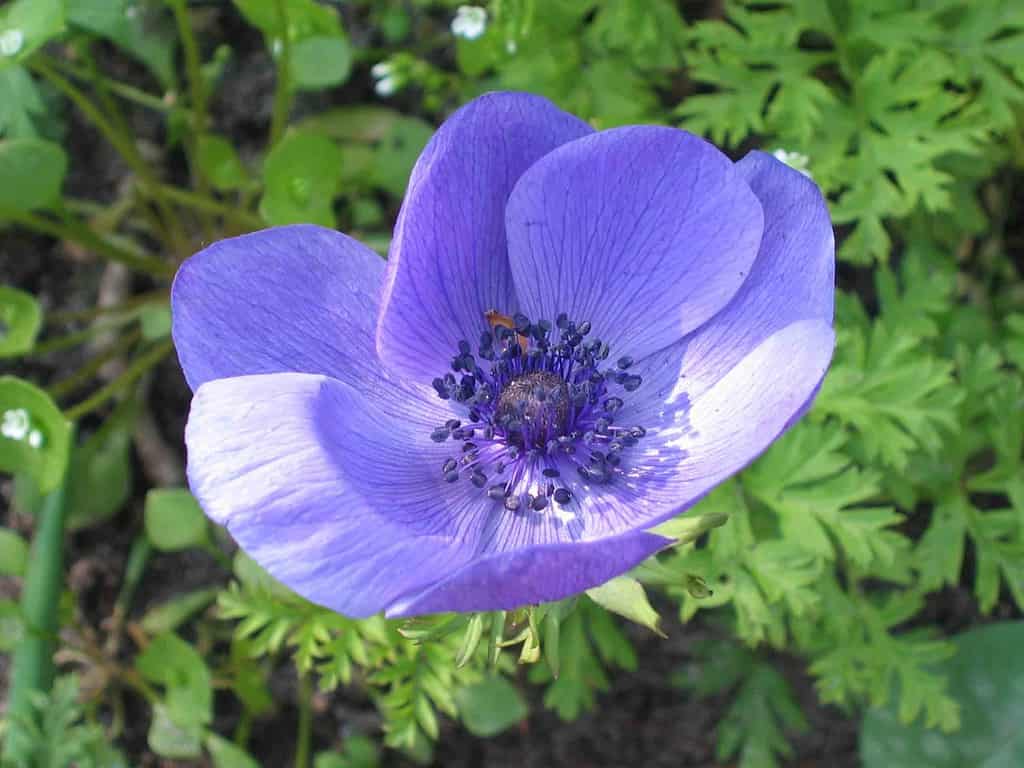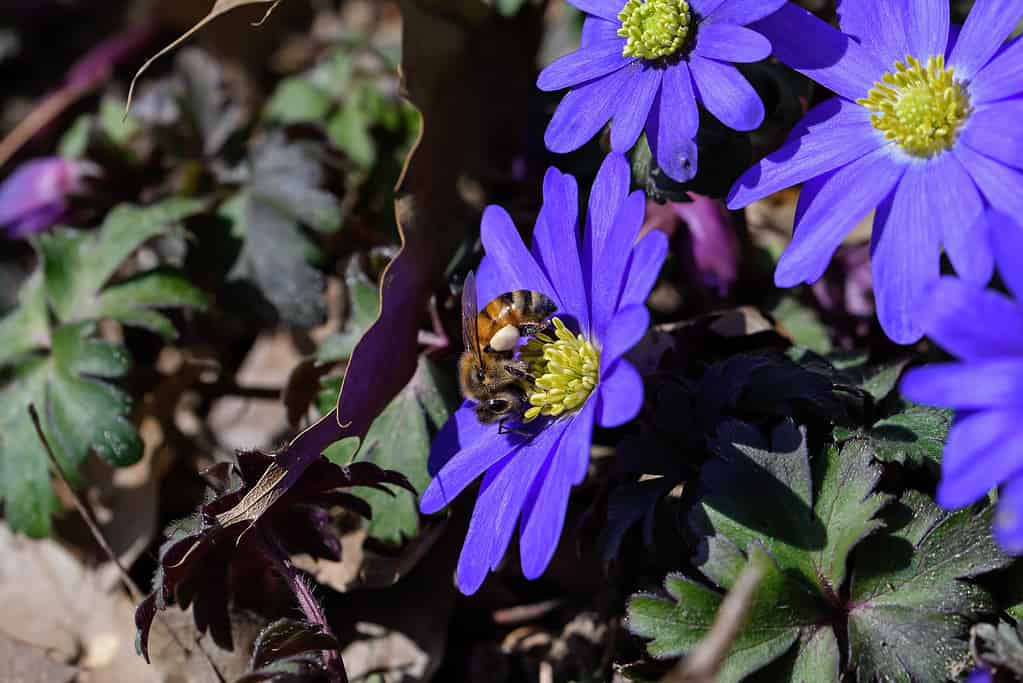Anemone bulbs are commonly known as corms, rhizomes, or tubers, depending on the plant. They are not true bulbs because true bulbs contain next year’s plant. Corms, tubers, and rhizomes are actually modified stems. But most gardeners aren’t concerned about these details. They just want a lovely-looking floral display, and anemones provide just that. This is why we’ll lump corms, tubers, and rhizomes all together under the “bulb” term.
Here are three types of anemone bulbs that will give you an amazing display of springtime blooms.
1. De Caen Anemones
These are among the most popular anemones. They are available in a number of cultivars, providing colors ranging from blue and white, to a variety of reds (bright, dark, wine, etc). De Caen anemones are one of the largest groups on the market today.
Most De Caen anemones are hardy from USDA Hardiness Zones 7-10, though it can vary based on the individual cultivar. The ‘Bordeaux’ variety can thrive in much warmer climates, up to a tropical Zone 12. Growers in Hawaii need to plant this anemone!
Growers in zones below Zone 7 can still enjoy the popular De Caen anemones. They simply need to be grown as annuals. These plants are unlikely to perennialize in zones cooler than Zone 7.
The De Caen anemones originated in France, so they are sometimes known as French anemones.

De Caen anemones come in a variety of colors, including this lovely shade of blue.
©阿橋 HQ / CC BY-SA 2.0 – License
2. Blanda Anemones
This species is native to Greece and Turkey. There are a wide variety of cultivars for Blanda anemones, as well. Blanda anemones are commonly known as windflowers.
Blanda anemones typically grow smaller than anemones such as De Caen and St. Brigid. Six inches is usually the maximum height for Blanda anemones, though with so many cultivars, it will depend on the individual variety.
These anemones are typically a lovely white and bluish-purple. You aren’t the only one who will love these anemones. Blanda anemones are a favorite for pollinators such as bees and butterflies.
Blanda anemones are hardy in Zones 5-9. This is a great anemone choice for gardeners who live in climates that are too cool for De Caen anemones. For example, De Caen anemones are unlikely to perennialize in Ohio, but every Ohio gardener should be able to grow Blanda anemones as perennials.
And again, if you live in a zone below Zone 5, you can still enjoy Blanda anemones as annuals.

Blanda anemones are a favorite for bees.
©iStock.com/McKinneMike
3. St. Brigid Anemones
These anemones have a similar hardiness to the De Caen anemones. As perennials, they are recommended for Zones 7-10.
As with the previous two anemones, a variety of cultivars are available. St. Brigid anemone cultivars come in a variety of bright, springtime colors, such as red, pink, purple, blue, and white. The silky petals will be a welcome addition to flower beds, rockeries, and containers.
They also make a popular cut flower, as many anemones do. In general, anemones are not fragrant. This makes them perfect for cut arrangements. You get the beauty of the anemone blooms, but they don’t conflict with other, more fragrant flowers.
One secret that professional floral designers use to help the flowers last longer in cut arrangements is to sear the end of the stem in boiling water for 15 seconds. This little insider trick will allow the anemone blooms to stick around for much longer than they would otherwise.

This magenta St. Brigid anemone is one of many vibrant colors that are available today.
©iStock.com/OlgaKorica
Perennials vs. Annuals
If you live in a hardiness zone where anemones will perennialize, plant the bulbs in the fall. You can plan on seeing the blooms in early spring. Gardeners in South Carolina, for example, should have no problem growing any of these anemones as perennials.
If you live in a cooler zone (as low as Zone 3), you can plant the bulbs in early spring. This will give you a display of lovely annuals in late spring or early summer. This is a great idea for gardeners in areas like Minnesota, for instance.
Planting Anemone Bulbs
Anemones grow best in slightly acidic soil, but they will usually grow just about anywhere. Before putting the bulbs in the ground, soak them in water overnight. Soaking the bulbs the night before planting softens them and will speed up the sprouting process.
Anemones can tolerate some shade, but they do need some time to bask in the sunshine each day. A partially shaded site is a good choice, but they can thrive in full sun, as well.
Unlike other bulbs, such as tulips, it is often difficult to determine which end of the bulb is up or down. The good news is you don’t have to worry about that. Just plant the bulb three inches deep, and it will grow in the right direction. Space the bulbs apart by a distance of about two times the width of the bulb.
One final bonus…all three anemones discussed above are deer-resistant. These anemones would be perfect for your garden if you live in a deer-prone area.

It can be hard to tell the top from the bottom on anemone bulbs, but it doesn’t matter. They’ll grow the right way!
©iStock.com/Maryviolet
The photo featured at the top of this post is © iStock.com/nkeskin
Thank you for reading! Have some feedback for us? Contact the AZ Animals editorial team.






